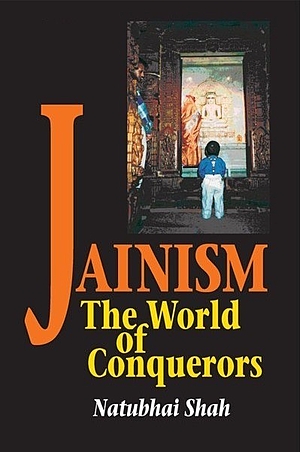The Kalpa Sutra, an important Jain scripture, composed several centuries before the common era, contains a prediction that Jainism would decline, only to undergo a revival 2,500 years after the time of Mahavira. Interestingly, we find that the twentieth century is proving to be a period of growth for Jainism around the world. This century has also seen considerable research and publication, by Indian and foreign scholars, on Jain history, religion, culture and philosophy as well as the translation of Jain scriptures into many languages. It was also in this century, that the 'father of the Indian nation', Mahatma Gandhi, brought to international attention the principle of 'non-violence' (ahimsaa) during the struggle for India's independence. It is well known that he learned this basic principle from Jains. The twentieth century has seen the translation of Jain scriptures into languages such as Hindi, Gujarati and English, enabling lay Jains to have direct access to the texts for the first time. The major Jain migration to the West is also a feature of the latter half of this century and this has been an important factor in spreading the Jain message throughout the world.
Both male ascetics and female ascetics have played an important role in encouraging laypeople to observe the Jain way of life, and to build temples, upashrayas and educational institutions. It is under their guidance that the practices of meditation and religious rituals, and individual austerities such as fasting and penance have become widespread. Jain leaders have done much to bring the issues of animal welfare and environmental protection into the arena of public debate. Some ascetics have preached the message of Mahavira among marginal communities, whose people are largely rural, poor and with little education, and the results of such encounters can be seen in the change of lifestyle in such communities. Some of them have adopted a non-violent way of life, including vegetarianism, avoiding alcohol, and other Jain dietary habits. The twentieth century has seen many prominent aacaaryas, such as Buddhisagar, Vijay Vallabh Suri, Dharma Suri, Prem Suri, Ramchandra Suri, Sagaranand Suri and Anand Rushi. Their work included promotion of the Jain way of life, empirical education, health, community welfare, social reforms, renovation of temples, libraries and the establishment of other community welfare institutions such as cottage industries for women and the promotion of Jainism. These activities have benefited the sangha, as many recruits to asceticism are highly educated.
Panyaasa Chandrasekhar has a large following among young educated Jains, who attend his lectures in large numbers. He has also founded a residential school for pupils from five years of age upwards, where the teaching is conducted in a traditional Indian manner as practised in the ashrams of the past, teaching both traditional Jain studies and modern subjects. The establishment of spiritual centres such as the Srimad Adhyatmic Kendra at Koba, Ahmedabad, has provided aspirants training for spiritual practices.
Among the newly built twentieth century temples and upashrayas, some are the most exquisite and aesthetically gratifying buildings, and these have been built both in India and abroad. Some temples have become tourist attractions. Of the modern temples, those at Satrunjay, Vallabh-Smarak in Delhi, the Velgachia temple in Calcutta, the Valkeshwar and Sarvoday temples in Bombay, the Hathising and Ajitnath temples in Ahmedabad, the Gomatagiri temple in Indore and the new temple at Pavapuri are highly regarded as masterpieces of the Indian architectural heritage. The temples built outside India include: Mombasa and Nairobi, the Shantinatha temple at the Jain Centre in Leicester, and in the United States, temples such as those at Chicago and Los Angeles.
Literary activity has burgeoned in the twentieth century: Many scholars, ascetics and laypeople have produced literature on a wide range of subjects. The scholarly work has helped dispel the misconceptions of Jain history among both Indian and foreign scholars. The Lalbhai Dalpatbhai Institute of Indology, Ahmedabad, and the Kailas Sagar Jnaana Mandir at Koba, are the main repositories of manuscripts and collections of artefacts, established in this century, where the indexing of thousands of Jain manuscripts is near completion.
A large number of institutions, including major universities throughout India, conduct teaching and research programmes on Jainism in Prakrit and other subjects of Jain interest. Although the facilities for learning are available, the number of students taking advantage of Jain studies and research are very low, because of the lack of job opportunities after such a training.
In modern India, Jains are not only prominent in businesses but also are found in the Civil Service, the military, judiciary, police and other executive services, and Jains have also achieved high positions in politics and public life. In the sciences, Jains have outshone, both in India as well as abroad, and contributed to many areas such as nuclear energy, chemistry and physics, engineering and medicine, and academic and research fields Precise statistics about Jains' in various professions are difficult to ascertain. However, in 1992, the Jain Centre of Greater Boston published statistics for North American Jains:
Table 2.2 Statistics of North American Jains in various professions, 1992.
| Medicine | 14.4 % | Business | 16.0 % |
| Engineering | 32.1 % | Finance | 7.5 % |
| Management | 4.4 % | Computers | 3.5 % |
| Education | 17 % | Others | 20.4 % |
These findings suggest that migrant Jains have high levels of educational and professional qualifications, and employed in highly skilled jobs.
Some monks and nuns have broken their vows and have travelled to the West for the promotion of Jainism by using vehicular transport, and the major figures who have helped in disseminating Jain values are the Revered Chitrabhanu and the late Aacaarya Sushilkumarji. They and many other saints and scholars have been very useful to the Jains 'abroad' in preserving their culture and traditions. A monk who remained in India, but who also broke with traditional restrictions on travelling by vehicle was the late Upaadhyaaya Amarmuni, who founded an institution in Bihar, the Veerayatan. This foundation provides facilities for the promotion of Jain values and medical and educational services to the community, and has also established a museum of Jain and other cultures, which has become a tourist attraction. He was rather revolutionary in his decision to initiate a woman as an aacaaryaa. Aacaaryaa Chandana is a serious scholar and a dynamic personality, is an accomplished public speaker and has travelled abroad, and has given her support to the creation of a museum at the Leicester Jain Centre. Her disciple Saadhvi Shilapi, who is in London for her doctoral studies, has been very helpful to the children and young people undertaking a Jain education.
This century has seen advances in the status and education of Jain women in many fields. There are almost two and a half times as many Jain nuns as monks, many are excellent scholars, speakers and leaders. In temples and upashrayas, women's attendance outnumbers that of men. Women now receive a higher education and professional training, and are found practically in all the professions, and in spite of the complexities of modern life, they have retained traditional Jain values within the family and the community.
Despite the above encouraging trends, all is not as Jains would wish: Jain culture is hardly taught in Indian schools, children learn their faith through paathasaalas and in the family, and once they go to secondary school, they are lost to the wider culture and complexities of life. If Jains wish to preserve their culture through future generations, they will have to provide an infrastructure for modern standards of education and recreation for children and young people.
Jain institutions flourished in the past and rarely faced financial problems as, like many religions, they devised schemes to ensure financial support for key institutions by asking members to donate a proportion of their income. Jain scriptures require the laity to offer a certain percentage, between 6 and 33 percent, of their income for community welfare and other charitable purposes, and there are moves in some quarters to revive this tradition.
Of the two Jain sects the Svetambars are mainly found in Gujarat, Eastern Rajasthan, Punjab, Delhi and Bombay, and the Digambars are scattered across Western Rajasthan, Haryana, Delhi, Uttar Pradesh, Madhya Pradesh, Bihar and South India. The indigenous Jains of South India are farmers and artisans; their religious and social life is controlled by bhattarakas and they do not have any interaction with north Indian Digambars. The indigenous Saraaka Jains of Bihar and Orissa are poor; they follow Parsvanatha's teachings, and have no social relations with the affluent Svetambar or Digambar Jains.
Jains have an ill-founded fear of losing their identity in the vast ocean of the Hindu community. Their relations with Hindus are good; Mahatma Gandhi promoted ahimsaa and wove it into the fabric of the modern Indian society. They can promote their values in close co-operation with Hindus and other major faiths making use of modern technology.
Jains in the twentieth century will have to keep abreast of the changing situation of society. They are a wealthy community; they can provide necessary infrastructure and adapt to the modern methods for promotion of the Jain values to make their future rosy.
 Dr. Natubhai Shah
Dr. Natubhai Shah
